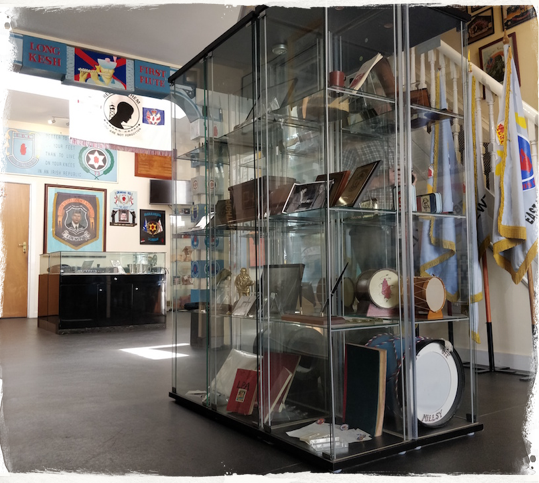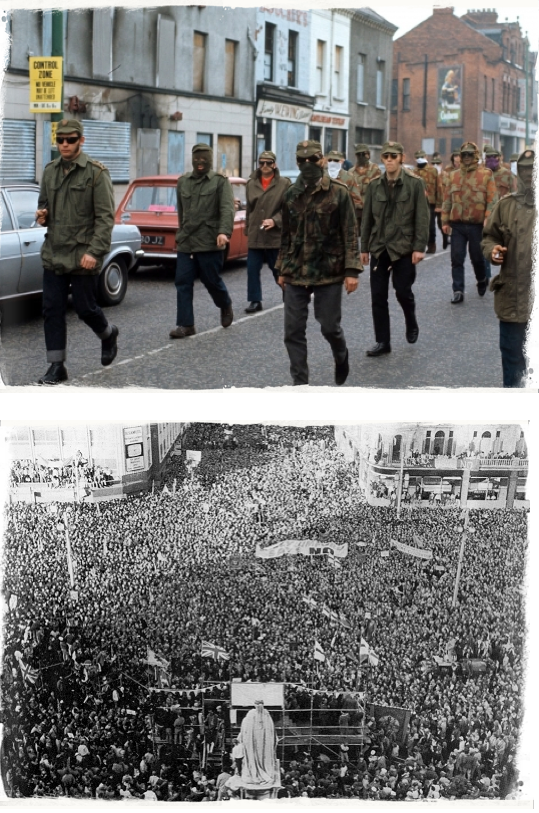Andy Tyrie
About
The East Belfast Loyalist Conflict Museum: has been created to enable the Loyalist working class community, as it emerges from forty years of violent conflict, to reflect on those years and hopefully that process of reflection may give us an understanding of what actually happened to us as a community. There are reams and reams of press reports, pictures, books and TV programmes depicting many stories but all written by others. The Loyalist people have not told their story until now.
Discover more about the culture and history of this local loyalist paramilitary group by visiting our Centre and participating in our walking tours that mark significant points in the history of the Ulster Defence Association (UDA).

Andy Tyrie
History
Thoughts relating to the creation of a safe space for reflection also stemmed from these discussions, a safe place where those who took up arms against the republican movement could reflect on what they had experienced and witnessed as a result of conflict. Many of these men would have experienced prison life, experienced lose, witnessed the deaths of friends, fellow comrades, and most importantly their family. We are using this process as a way of dealing with the past.
Currently we have many international groups visiting the Centre, from Universities as far as France, Canada and America all studying international conflict, also people travelling from countries currently experience conflict. All with the aim of understanding how a resolution was found from 30 years of struggle and terror within Northern Ireland.

Andy Tyrie
Origins
The Ulster Defence Association emerged as an umbrella organisation after a series of meetings during the middle of 1971 of loyalist "vigilante" groups called "defence associations". The largest of these were the Woodvale Defence Associations and Shankill Defence Association, with other groups based in East Belfast, The Braniel, Ballysillan, the Hammer and Roden Street.
By time of the organisations formal launch, Charles Harding Smith had become the group's leader, with former British soldier Davy Fogel as his second-in-command, who trained the new recruits in military tactics, the use of guns, and unarmed combat.
At its peak, with between 40,000 to 50,000 members, the UDA was the largest of the paramilitary organisation in Western Europe.
The Ulster Defence Associations most prominent early spokesperson and first elected Brigadier of East Belfast was Tommy Herron. However on 14th September 1973 Tommy was shot dead on a quiet County Down road, his body was found in a ditch in Drumbo with a gunshot wound to the head. His legally held personal protection weapon was still in its holster when he was found. To this day no one is still sure who murdered Tommy with many believing he died at the hands of British state services. As a result of this Andy Tyrie would emerge as leader soon after. Its original motto was Cedenta Arma Togae ("Law before violence") and it was a legal organisation until it was banned by the British Government on 10 August 1992.
Throughout the majority of its period of legality, the UDA's attacks were carried out under the name "Ulster Freedom Fighters" (UFF). The UDA's campaign of violence began in 1972. In May of that year, the UDA's pressured leader Tommy Herron decided that responsibility for acts of violence committed by the UDA would be claimed by the "UFF". Its first public statements came one month later.
The UDA's official position during the Troubles was that if the Provisional Irish Republican Army (Provisional IRA) called off its campaign of violence, then it would do the same. However, if the British government announced that it was withdrawing from Northern Ireland, then the UDA would act as "the IRA in reverse."

